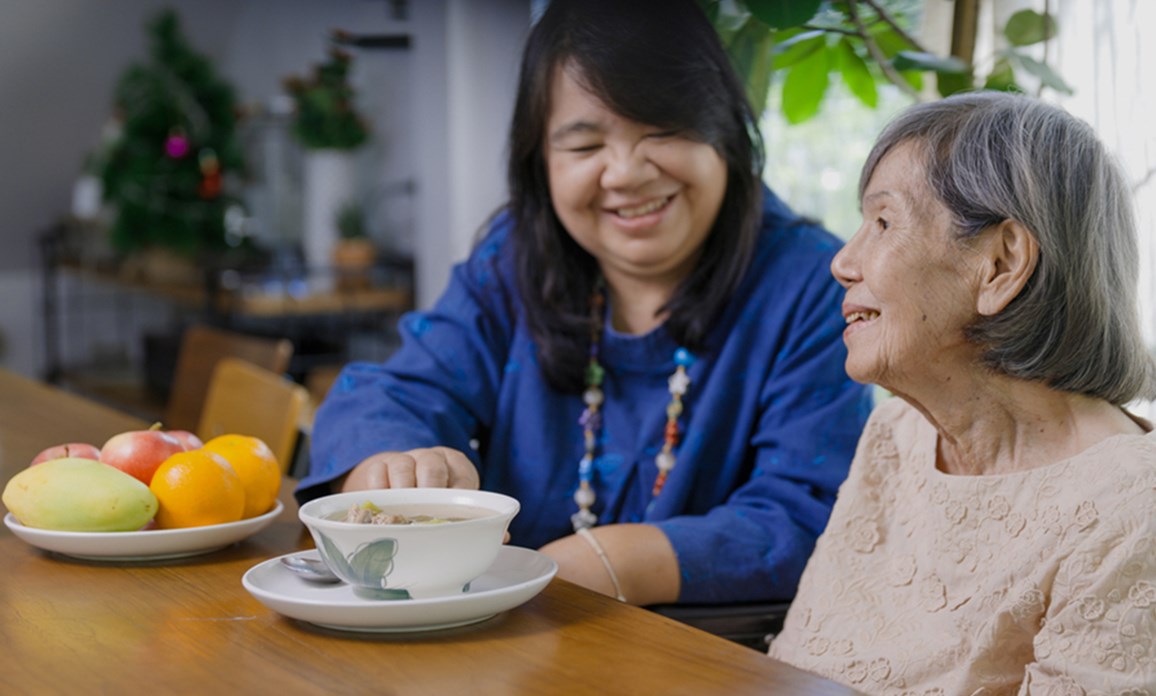Being the Carer - How to Take a Break
Being the main caregiver of a person living with Parkinson’s Disease (PD) – a spouse, life partner, parent, or another person close to you – is a demanding, long-term commitment. As PD evolves, so you will your duties and obligations change to accommodate the new challenges brought on by this progressive disease. While many see this as a natural evolution of their relationship with their loved one, it is important to recognize the toll this role takes and to manage its effects on your own well-being.
In this article we will discuss the importance of taking a break from caring for the person living with PD. We will also cover ways in which a break may be appropriate and beneficial for both of you, and what benefits you may be entitled to in order to allow your care-giving relationship to endure.
A Break from Providing Care, Not from Caring
Taking a break from your role as a caregiver does not mean you stop caring, or that you care less. Some people easily get swept up in a streak of selfless care-giving, feeling that it is their duty to support their loved one who is now in need; yet by neglecting your own well-being you are not doing yourself, or your loved one, any favors – if your physical or mental energy runs out, you will be unable to care for either of you. It is therefore paramount that you remember to take care of yourself as well as the person living with PD.
When taking a break from your Parkinson’s routine, it is important that you focus on your own needs – whether they are physical, emotional, or social. Try not to use your breaks to catch up on your day-to-day Parkinson’s-relate duties; instead, plan for some “me” time. You may wish to get much-needed exercise, practice a hobby, spend quality time with friends, or simply have a quiet moment to yourself to read a book or watch TV. Whatever activities you choose, make sure that they help you recharge and return to your PD routine refreshed and energized.
How long or how often you take breaks depends entirely on you and on your honest needs. There is no rule-of-thumb to serve as guideline as it depends on your own personal needs, the intensity of care you provide, and your relationship with the person living with PD. For example, if your life partner was recently diagnosed with PD and their symptoms are still mild and manageable, you may enjoy your time spent together and you might not be required to offer any physical assistance. Your need for breaks from providing care may therefore be limited. Conversely, if the person you are caring for requires considerable physical help and struggles with everyday activities, you may wish to take breaks several afternoons every week, or even every day.

How to Take a Break
When you do decide to take a break, it is important that you arrange for alternate care for your loved one during your absence. One way of doing this is by having a friend, family member, social worker, volunteer from a recognized organization, or even paid help to come in to cover your main duties during your absence – be it for a few hours, overnight, or even longer. While modern technology can make you available for emergencies, you may wish to make sure that the person taking over is able to provide most of the care independently so that your time away can be truly yours.
Another option is to have the PD patient relocate to a day center where they would be cared for by trained staff for several hours, which you can spend recharging at home without having to get out yourself. If you both enjoy this arrangement, this may even become a daily practice, allowing the person living with PD a change of scenery and an opportunity to socialize with others while you regain your strength.
Taking a break doesn’t necessarily mean spending time apart. Where possible, you may decide even to spend a holiday together at a designated care facility which would take over most of your care duties as you both enjoy each other’s company without the burden of your daily obligations as a caregiver.
In some places, you may access benefits – such as social security benefits, government-paid assistance, or private insurance benefits – to cover the cost involved in taking short breaks. Reach out to your local Parkinson’s clinic, Parkinson’s association, or other resources to find out whether you may be entitled to financial assistance.

When Occasional Breaks Aren’t Enough
As time goes by and Parkinson’s Disease progresses, the physical and emotional strain on you as a primary caregiver will likely increase. Your own age, health condition, or other circumstances may also make it increasingly difficult to provide the care your loved one deserves while also protecting your own well-being over time. If this is your situation, you may find that taking an occasional break for a few hours simply isn’t enough – you need regular assistance to help you both cope. This type of assistance is usually provided at a designated care facility. This may once again lead to feelings of guilt; while this is only natural, try to remember that you are human – the amount and level of care you alone can provide is not without limits, and specialist care may be just what you both need.
The type of assistance facility you choose depends largely on the condition and needs of the PD patient. If they are still somewhat independent, a retirement home or an assisted living facility may be a good choice for you. Such facilities typically offer residents independent apartments or units where they continue to live somewhat independently, while also providing on-site assistance of various types. This has the added bonus of the two of you still living together, as oftentimes assisted living homes allow couples or family members to move in together. When considering a facility, be sure to check that it can offer the types of daily assistance you may require in the future.
Care homes, on the other hand, do not typically allow a spouse to move in together with the patient. They offer more advanced, intensive assistance and are suitable for patients who are less independent. Care is typically available 24 hours a day, 7 days a week, as well as meals and laundry services. Check with your Parkinson’s clinic or Parkinson’s association to see whether there are any care homes in your area which specialize in treating people with Parkinson’s. Here, too, you may be able to access benefits to help cover the cost of care.
Your Well-Being Matters
Whatever break you need – be it one afternoon every week, or every day – remember that your well-being is what allows you to provide the care your loved one needs. By taking care of yourself and your own physical and emotional needs, you will be more available to your loved one as they benefit from your support and enjoy your loving company.
Source: Parkinson's Europe
THIS ARTICLE DOES NOT PROVIDE MEDICAL ADVICE and is not a substitute for professional medical advice, diagnosis or treatment. If you or any other person has a medical concern, you should consult with your health care provider or seek other professional medical treatment immediately. Never disregard professional medical advice or delay in seeking it because of something that you have read on this website or in any linked article, blog or other materials.








